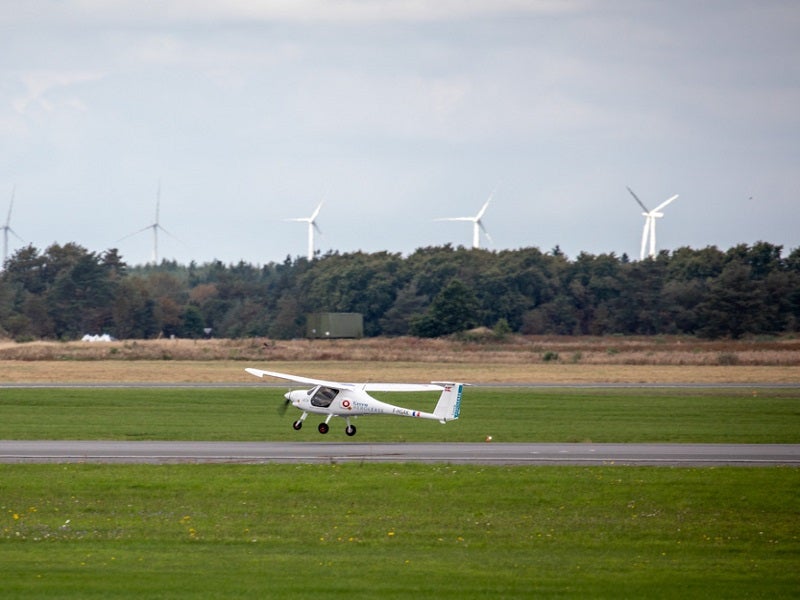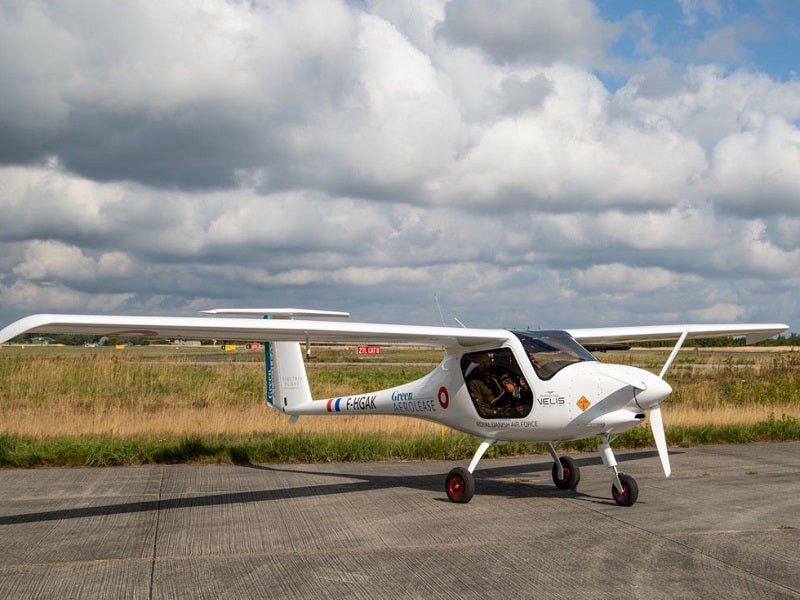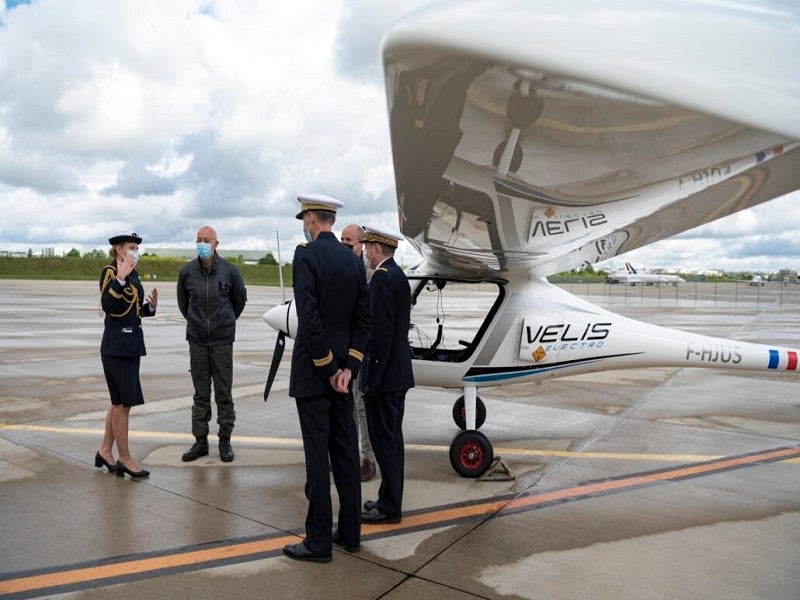The Velis Electro electric aircraft is a single-engine, all-electric trainer aircraft designed and developed by Pipistrel Group.
It is the world’s first European Aviation Safety Agency (EASA) type-certified electric-powered aircraft.
Velis Electro orders and deliveries
The Danish Ministry of Defence leased two all-electric Velis aircraft for training, under its action plan for more environment-friendly defence solutions.
The aircraft were delivered to the Danish Air Force and displayed to the media in November 2021. The procurement was made under a two-year lease from Green Aerolease, a French company.
Green Aerolease ordered 50 Velis Electro aircraft from Pipistrel Group under a partnership formed between the two companies in January 2021.
Velis Electro is being used for training by pilots of the Danish Armed Forces at the flying school in Karup, Denmark. It is expected to complement the Danish Air Force’s existing training aircraft, Saab T-17.
The aircraft will undergo a series of tests for two years, which will evaluate its suitability for pilot training. The tests will also serve as a concept demonstration to evaluate the potential of electric aircraft technology for use by the Danish Air Force.
French Air and Space Force chief General Philippe Lavigne flight tested the Velis Electro aircraft in May 2021.
Pipistrel is providing its Virus SW 121, Panthera and Velis Electro aircraft, and a Velis X-Alpha VR simulator to the Slovenian Ministry of Defence. The Defence Ministry will test the aircraft models to assess the feasibility of deploying them for the initial training of pilots and the upgrade of the flight training system of the Slovenian Armed Forces (SAF).
Velis Electro electric aircraft design and features
The Velis Electro aircraft is a full-electric derivative of the proven Pipistrel Virus SW 121. Its structure is made of composite materials such as Kevlar, carbon fibre, and fibreglass.
The aircraft is designed to operate in difficult weather conditions, including low temperatures and rain.
It has a length of 6.47m, a wingspan of 10.71m and an overall height of 1.90m. Its maximum take-off weight is 600kg while the empty weight with batteries is 428kg. The payload carrying capacity is 172kg.
Velis Electro can be used as a trainer aircraft, as well as for commercial use. The training aircraft can accommodate two people and features fewer moving parts, which reduce the maintenance costs.
The aircraft provides a completely emission-free and quiet operation with a noise level of approximately 60dB.
Cockpit and avionics of the Velis Electro
The cockpit features a 5.7in LCD Pipistrel electric propulsion system indicator (EPSI) 570C multi-function display (MFD), which is the main source of information for the pilot. It mainly shows information about the state of the electric propulsion system.
The intuitive display uses graphics to display relevant parameters. It also enables system software updates.
The main computer aboard the aircraft allows the operator to monitor the operations.
Engine and performance of the Velis Electro
Velis Electro has a single type-certified E-811 liquid-cooled electric engine with a rated electric power output of 345V DC.
The engine is a combination of a liquid-cooled electric motor and a liquid-cooled power controller. The maximum power generated by the electric engine is 57.6kW.
The battery system comprises two batteries connected in parallel and installed in a redundant two-unit arrangement. The batteries provide a nominal capacity of 24.8kW.
One of the battery packs is installed in the nose of the aircraft while the second is placed behind the cabin. The crashworthy and fault-tolerant battery system ensures the aircraft operation is unaffected even if one of the batteries fails.
The propulsion system also integrates a three-bladed fixed-pitch composite propeller. The in-built health monitoring system in the aircraft reduces the risk of system malfunctions. The improved features of the aircraft double the powertrain components lifespan compared to an earlier generation of electric aircraft.
Velis Electro can be powered up by four switches with no warmup time. Two high-power axial fans located behind the radiators provide battery cooling. An air inlet for the radiator is installed on the left side of the aircraft’s fuselage, while the warm air from the radiator leaves the fuselage from the bottom.
Two electrically driven pumps and a radiator draw out the excess heat to prevent the propulsion system from heating. Furthermore, a battery management system (BMS) enables the automatic monitoring of axial fans.
The electric aircraft can reach a maximum range of approximately 100km and attain a top speed of 181km/h. It has a service ceiling of 3,660m and a flight endurance of between 30 and 50 minutes. The aircraft can be fully charged in 45 minutes.






